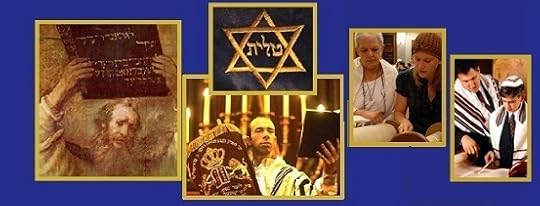Carl E. Olson's Blog, page 106
March 13, 2014
The Media’s Fictional Francis
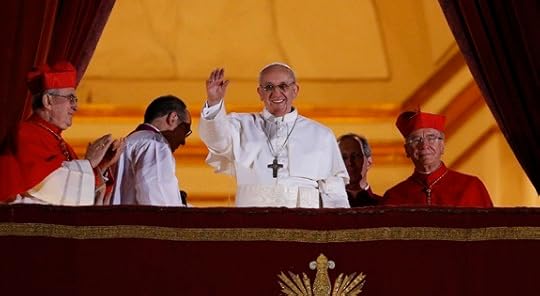
Pope Francis appears for the first time on the central balcony of St. Peter's Basilica at the Vatican March 13, 2013. (CNS photo/Paul Haring)
The Media’s Fictional Francis | John Paul Shimek | CWR
In the year since his election to the papacy, Pope Francis has received many accolades and honors. But will this acclaim further his efforts in the New Evangelization, or hinder them?
Last week, La Stampa’s Vatican Insider reported that Pope Francis has been nominated for the 2014 Nobel Peace Prize. According to the news brief, other nominees include Vladimir Putin, Edward Snowden, and Malala Yousafzai. While the Norwegian Nobel Committee holds the details of nominations in secret for five decades after their submission, the committee did announce that 2014 saw the greatest number of candidates to date. In fact, the names of 278 candidates were forwarded to the committee for consideration, including the names of 47 organizations, topping the previous record of 259 nominations submitted last year. The winner will be announced in October.
While the nomination is itself an honor for Pope Francis, as well as for the universal Church, could winning the Nobel Peace Prize occasion an even higher level of misunderstanding about the Latin American pontiff’s principles and positions? Put another way, do such prizes provide platforms for the New Evangelization—something Francis has discussed often and at length—or do they further confuse both Catholics and others about the goals and priorities of the Holy Father?
In considering these questions, one needs to think about the larger context of the nomination. If Pope Francis’ Nobel nomination meets with success, the accolade will be added to a list of other honors. In 2013, Pope Francis was named Time’s“Person of the Year,” The Advocate’s “Person of the Year,” and Esquire’s “Best Dressed Man of the Year.” When Time announced its selection, it referenced Pope Francis’ humble, simple, and principled approach to papal politics, noting his willingness to work toward the reform of the Church. Howard Chua-Eoan, Time news director, and Elizabeth Dias, Time reporter on religion and politics, explained that Pope Francis “took the name of a humble saint and then called for a church of healing,” adding that the “septuagenarian superstar is poised to transform a place that measures change by the century.”
To be sure, Time’s explanation is grounded in fact. Pope Francis has been working to bring reform to the Roman Curia. Prior to the papal election last spring, cardinals discussed the need to transform the Vatican’s central office structure. During pre-conclave general congregations, many cardinals expressed the need to make the Roman Curia less like a network of bureaucratic offices and more like the pope’s helping hand in the cause of the New Evangelization. The discussion resulted in concrete measures. Following his election on March 13, 2013, Pope Francis appointed an eight-member Council of Cardinal Advisers. In recent months, the Pontiff has introduced reforms of the Institute of Religious Works—the so-called Vatican Bank—and in just the last several weeks he has announced the creation of an economic secretariat to manage the Holy See’s assets with transparency and efficiency.
However, over the course of the past year, papal words and actions have been interpreted in wildly different ways, sometimes occasioning confusion about the direction in which the Pope wants to take the Church.
What it really means to be a Catholic, regardless
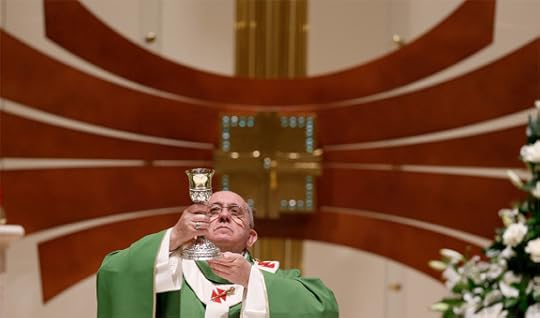
Pope Francis elevates the Eucharist as he celebrates Mass at St. Thomas the Apostle Parish on the outskirts of Rome Feb. 16. (CNS photo/Paul Haring)
by Carl E. Olson | Catholic World Report blog
Sometimes you can be too clever. And then you starve.
"Catholics", observed G. K. Chesterton in The Thing: Why I Am a Catholic, "know the two or three transcendental truths on which they do agree; and take rather a pleasure in disagreeing on everything else."
But what happens when many, even most, Catholics stop believing in those two or three transcendental truths? Or, taking it even further, people question the meaning of nearly every word, to the point that words are like Twitter handles, health care policies, or the career of Justin Beiber: here today, gone tomorrow, what can we say?
Those thoughts crossed my mind while reading Peter Manseau's essay, "What It Means To Be a Catholic Now" (March 9th), in the New York Times. Manseau, who has a doctorate in religion from Georgetown, has written a couple of novels, as well as a book, Vows: The Story of a Priest, a Nun, and Their Son, the blurb for which offers this teaser: "His mother is a former nun; his father is a priest who never renounced his vows, but is considered a priest under suspension." It sounds messy, and so I'll probably not read it in my Sunday best. Whatever the case was with his parents, Manseau seems happily ambivalent about matters religious, and that ambivalence is on full parade in his Times essay:
Who is a Catholic? Is it a matter of baptism? Belief? Loyalty? Psychology? For some, the answer depends on tests of political purity. For others, who may no longer receive the sacraments but continue to identify with the faith, “once a Catholic, always Catholic” is not just a principle of canon law (semel catholicus, semper catholicus), but the diagnosis of a chronic condition.
For some, for others, for them, for Group A, for Group Z. One could play this game for quite a while, and some are happy to do so. Many who profess a sort of transcendent openmindedness like to point out that there is always someone who disagrees with this definition or that demarcation. Well, yes, but what do you mean by "disagrees"? Do they really disagree? What does it mean to "disagree"? Can we ever agree on what it is to "disagree"? And if we did, would we really be agreeing to agree about "disagree"?
Ahem.
The young Chesterton (fifteen year pior to becoming Catholic) stated, “An open mind is really a mark of foolishness, like an open mouth. Mouths and minds were made to shut; they were made to open only in order to shut.” At some point, we don't argue about whether or not the stuff on your plate is really food or "food" or something undefinable, otherwise we starve. (Not "starve", but really starve, whither away, and die. Period.) My only somewhat flippant point is that Manseau's essay exhibits this sort of sophistic silliness, as if he is trying to will into existence a reality so complicated that he will be freed of any duty to attend to reality. He writes:
The Catholic version of this conundrum is no less fraught. To begin with, there are dozens of ethnically and nationally affiliated Catholic churches, all of which make an equal claim on the title, though many have moved in and out of schism with Rome. This landscape is further complicated by proliferating independent churches that make elaborate claims to the lineage of spiritual authority known as apostolic succession, and ultra-devout lay societies that worry over orthodoxy like a freelance Inquisition.
And yet, oddly enough, if you ask a hundred people what the "Catholic Church" is, 98 of them will have an answer of some value, while the two others will be a straight-up madman chanting "We will rock you!" and a lesbian deconstructionist writing a dissertation on 18th-century vegan recipes for transgendered Norwegians.
March 11, 2014
New: "Education for Choosing Life" by Jorge Mario Bergoglio (Pope Francis)
Now available from Ignatius Press:
Education for Choosing Life: Proposals for Difficult Times
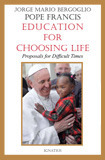
by Jorge Mario Bergoglio (Pope Francis)
This book can only be sold in the US, Canada, Mexico and US dependencies.
Times of crisis reveal what we are made of, urgently rousing the voices that restore meaning to uncertain wandering. So begins the foreword of this book, providing the framework in which these messages to teachers were given by Pope Francis while he was cardinal archbishop of Buenos Aires.
Although these messages were originally given to educators in Argentina, in a certain time and place, with particular social, political, and economic problems in view, they have universal appeal. The challenge to form the whole person, which involves more than providing a child with the ability to calculate, is relevant to teachers everywhere, regardless of their particular circumstances.
The cardinal began these reflections with the assertion that teaching is an act of hope, which requires a vision of what it means to be human, the belief that this vision can be realized to some degree even in a fallen world, and the creativity to find ways to achieve it.
Obstacles to human development must not discourage teachers, the cardinal wrote. "If we look at Jesus, incarnate Wisdom of God, we can realize that difficulties become challenges, challenges appeal to hope and generate the happiness of recognizing them as architects of something new. All this undoubtedly drives us to continue giving the best of ourselves."
Filled with the faith, hope and charity, as well as the practical wisdom, that have marked the pontificate of Pope Francis, these reflections are being made available in English to give encouragement and inspiration to educators in the United States.
Jorge Mario Bergoglio is the first Latin American and and the first Jesuit to be elected to the chair of Peter. A native of Buenos Aires, Argentina, he served as head of the Society of Jesus in Argentina, then became the archbishop of Buenos Aires, and was elected to be the Pope in March, 2013.
March 10, 2014
Available from Ignatius Press: "Catholic Controversies: Understanding Church Teachings and Events in History"
Catholic Controversies: Understanding Church Teachings and Events in History'
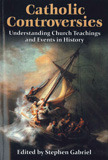
Edited by Stephen Gabriel
Catholic Controversies gives Catholics and others seeking the truth a valuable resource for correcting the most common misunderstandings and myths perpetuated by the media, university professors and the uninformed. Catholic Controversies collects the very best articles addressing most of the "hot-button" issues used to undermine both the authority of the Church and the faith of Catholics, especially young people. The topics range from proofs of God's existence to the Spanish Inquisition to human cloning and stem-cell research.
Stephen Gabriel makes it easy to digest these articles by providing an introduction to each topic and a summary, presented in bullet format, of the highlights and conclusions of each article. Every Catholic wishing to be armed with the facts should read this book.
Praise for Catholic Controversies:
"A very useful reader that dispels many of the myths, black legends, and disinformation scams that impede a real understanding of the Catholic Church."
- George Weigel, author, Evangelical Catholicism
"Did you ever have a friendly (or not so friendly) discussion with someone over hot buttons issues regarding the teachings or history of the Catholic Church and left saying, 'I wish I had been prepared better'? Well after reading the magnificent collection of essays in Catholic Controversies compiled by Stephen Gabriel, you will never have to say that again. Whether it is Scripture, Church History, Doctrine or the Moral teachings of the Church, Gabriel has collected the very best of Catholic modern day authors to help your friends, if not become Catholic, well, at least to be truly well informed so they can make up their own minds about the Catholic Church."
— Father C. J. McCloskey, Research Fellow at the Faith and Reason Institute in Washington, DC
"I can't imagine a better or handier reference for explaining and defending the Catholic position on all the 'hot-button' issues. Stephen Gabriel has surveyed many different fields--bioethics, public policy, history, sociology--to find the most authoritative and compelling voices. This book is as close to the Last Word as you're going to find between two covers."
— Mike Aquilina, Executive Vice President, St. Paul Center for Biblical Theology, author of many Catholic books, television host
Why the Jews Are Not the Enemies of the Church
Why the Jews Are Not the Enemies of the Church | Dr. John Lamont | HPR
It is not true, in any sense, that the Jews are the enemies of the Church, and the characterization of them as enemies is unjust
In a recent talk in Canada, Bishop Bernard Fellay, a member of The Society of Saint Pius X (FSSPX), stirred controversy by remarking that the Second Vatican Council was looked on favorably by the Jews, Freemasons, and Modernists, who are all enemies of the Church, and that this was a reason for objecting to the council itself. One should not read too much into Bishop Fellay’s remark itself, since it was a brief aside, and since he has never in the past expressed anything more than the basic Christian claims about Jews. The remark should, nonetheless, not have been made, and should now be corrected. It is not true, in any sense, that the Jews are the enemies of the Church, and the characterization of them as enemies is thus unjust. It is worthwhile explaining why this is so, because the belief that the Jews are enemies of Catholics was once widely held, and is still found in some circles. Priests will thus find it helpful to have a fairly comprehensive account of why the belief is wrong.
To show that the Jews are not the enemies of the Church requires an examination that addresses all the principal attacks on Jews that arise in discussion of this question.
One such attack maintains that the Jews are enemies of the Church in virtue of their religious beliefs. The religious beliefs in question are those of Rabbinic Judaism, which has been the dominant form of Jewish religious belief for the past two millennia. Rabbinic Judaism developed as a result of the destruction of the Temple in Jerusalem in A.D. 70, which removed the center of Jewish religious life. Some replacement for the Temple was required if Jewish religious existence was to continue. In the century or so after the destruction of the Temple, the study and observance of the Jewish Law was developed as this replacement.
The fundamental idea of the new structure of Jewish religion was that, in addition to the written law in the Pentateuch (the first five books of the Old Testament or the Torah: Genesis, Exodus, Leviticus, Numbers, and Deuteronomy), Moses received an unwritten law from God on Mt. Sinai, which was passed down by word of mouth through a succession of rabbis. This unwritten law was then supposed to have been committed to writing in the Mishnah—the collection of rabbinic traditions which supplements and systematizes the commandments of the Torah—which was completed around 200 A.D. The Mishnah contains laws on agriculture, festivals, marriage, civil and criminal law, ritual laws, and purifications. It is essentially an attempt to record and perpetuate the religious and legal views held by the scribes and Pharisees prior to the destruction of the Temple, together with inevitable covert extensions of these views. The difficulties of the Mishnah led to the composition of an authoritative commentary on it, the Gemara, completed in the 5th century, which exists in both Palestinian and Babylonian versions. The Mishnah and Gemara together make up the Talmud; the Babylonian version is the one generally used.
The reason why Rabbinic Jews are not enemies of the Church can be put briefly.
Casting Out Satan With Satan: A Review of "300: Rise of an Empire"

Casting Out Satan With Satan: A Review of 300: Rise of an Empire | Christopher S. Morrissey | CWR
This cinematic myth sacrifices history in order to seek one overriding purpose: maximum pleasure for a crowd seeking bloody satisfaction
The anti-war song “War Pigs” by the heavy metal band Black Sabbath plays over the closing credits to 300: Rise of an Empire. It is also featured in a trailer for the movie.
It is odd to hear this song’s denunciation of the demonic evils of war paired together with the film’s nauseating spectacle of cruel violence, which even includes graphic sexual violence. But the song’s prominent placement reveals a strange form of magical thinking. Apparently audiences want both to take pleasure in the most perverse displays of torture and murder, and yet at the same time to adopt a pose of moral superiority towards it all, as if their delight in the spectacle is not a real delight.
On its opening weekend, the movie earned an estimated 45 million dollars on 3,470 screens in the United States and Canada. Overseas, it earned an additional 87 million dollars in diverse locales: Russia ($9.2 million), France ($7.2 million), Korea ($6.5 million), Brazil ($5.8 million), Mexico ($5.5 million), and India ($3 million).
Even if the film’s opening numbers seem to predict that it will fail to match the box office success of 300, its predecessor from 2007 which earned over $456 million in 18 weeks, nonetheless the new film’s ambitions as a successor are even greater.
The violence is even more explicit this time around. And the outsized story acts both as a prequel (it begins with the battle of Marathon), a companion piece (it depicts the sea battle of Artemisium which happened at the same time as the land battle of Thermopylae depicted in 300), and also a sequel (it concludes with the battle of Salamis, in which the Greeks defeated the invading Persians).
But if its audience is interested in a 5th-century B.C. history lesson, they are coming to the wrong movie.
Rebuilding Catholic Society
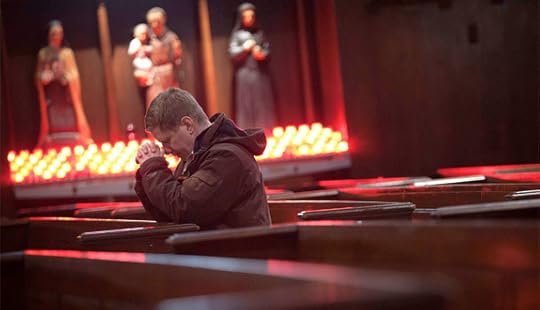
Rebuilding Catholic Society | James Kalb | CWR
The single most important practical goal of the Church is for Christians to thrive as Christians
The Church is not part of the State. Nor is she simply a part of civil society set up by her members to advance their public and private goals. She is an independent society established by God to be a light to the world. As such, she has her own principles of existence, authority, and action.
Her mission does not normally imply direct involvement in politics. Catholics may campaign for social and political causes that they believe promote good ends, just as they may run businesses in accordance with Catholic principles. The main political contribution of the Church, though, is the view of man and the good life for which she stands.
Nonetheless, proposing that view calls for practical action that has social effects. The Church won’t be listened to unless she embodies something the world needs. To convert others we must first convert ourselves. For that reason evangelization must begin with the self-evangelization of the Christian community. That is a practical and social effort, and it means the leaders of the Church are fundamentally pastors, not philosophers, pundits, philanthropists, or outreach coordinators. The Apostle Paul preached the Gospel to the gentiles through half the Roman world, but his letters have to do with the promotion of Christian life within the Church.
The single most important practical goal of the Church is for Christians to thrive as Christians. The primary way that comes about, of course, is for them to love God and neighbor and live accordingly, and for their pastors to show them how to do so by word, sacrament, and example. There is more to it than that, though. We don’t become good simply by deciding to do so, and even the best words, sacraments, and examples are not enough for most of us. We respond to our total environment, and most of us need all the help we can get.
So we are likely to do better in a setting that is as Catholic as possible. That is especially so in times like the present, when secular society is comprehensively organized and pervasively anti-Catholic.
March 9, 2014
A Cross-less Christianity is a lie of the devil
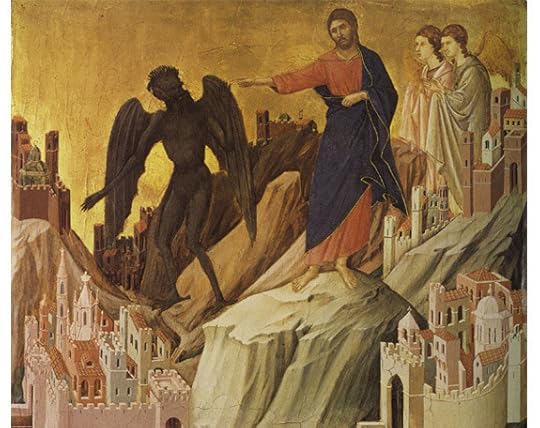
"The Temptation of Christ on the Mountain" by Duccio di Buoninsegna (ca. 1308-1311)
A Scriptural Reflection on the Readings for Sunday, March 9, 2014 | The First Sunday of Lent | Carl E. Olson
Readings:
• Gen 2:7-9; 3:1-7
• Psa 51:3-4, 5-6, 12-13, 17
• Rom 5:12-19
• Matt 4:1-11
“He that seeks not the cross of Christ,” wrote St. John of the Cross, “seeks not the glory of Christ.” Put another way, a cross-less Christianity is a lie of the devil. Lent, which leads us to Holy Week and the crucifixion, is a challenging reminder of this difficult but ultimately glorious truth.
The first Adam, shaped from dust by the Creator, walked and talked with God. But then he was tested and fell in the garden. Having listened to the serpent, he succumbed to the temptations of self-will and self-love, rejecting the will and love of God. Seeking his own glory, he was banished to the dust and dryness of the world, separated from friendship with God.
Through Adam, St. Paul explained to the Christians in Rome, “sin entered the world, and through sin, death.” Sin and death have ever been with us ever since; the temptation to seek our will is constantly with us.
Severed from God’s life, what could mankind do? Look to God’s gracious gift, “the one man Jesus Christ”, the new Adam. The co-eternal Word was not created, but “begotten”, having no beginning. But although all things were created for him and through him (Col 1:15-17), he chose to be born into the fallen, desperate world of man. After being baptized in the Jordan (Matt 3:13-17) and revealing his divinity, he was then led by the Spirit into the desert to walk and talk and be fed by the Father.
Then, after forty days, he was tested by the devil. Would he, like the old Adam, listen? Would he, like the first man, give in to the lures of the tempter?
He did listen, of course. The fact is, in this world it is impossible to escape temptation. And Jesus, being fully man, really was tempted: “For because he himself has suffered and been tempted, he is able to help those who are tempted” (Heb 2:18; cf. 4:15). But while the old Adam did not refute the words of the serpent (and so opened himself to disaster), the Word-made-flesh rebuked the father of lies. He knew what he was facing, and he did not hesitate or second guess when the devil misused Scripture. Jesus went into the desert to battle, to fight and renounce the devil and the passing glories of this world. He knew that true glory is not found in power, but in obedient, faithful sonship.
Much has been rightly made of how Jesus rejected the same temptations—hunger, selfishness, rebellion—that had overwhelmed the Israelites in the desert (see Catechism of the Catholic Church, par 538-40). But the Gospel shows how Jesus emphatically distinguished himself from the many self-proclaimed messiahs, false prophets, and political zealots so common in first-century Palestine.
Turning stones into loaves of bread would have not only satisfied his hunger, but been evidence of magical powers—a most attractive quality for anyone seeking worldly attention. And commanding God to keep him from harm if he threw himself from the temple parapet would have marked him as a powerful prophet or visionary able to control the will of God. The third temptation was the most direct and blatant. If Jesus had given up everything for political power, he would have shown himself to be a political revolutionary intent only on earthly glory and temporal power. “The devil,” writes Craig S. Keener in his commentary on Matthew (InterVarsity, 1997), “offered Jesus the kingdom without the cross, a temptation that has never lost its appeal.”
But Jesus is not a magician, a self-serving prophet, or a political zealot. He is the Son of God who came to do the Father’s will (Jn 6:38-40). The new Adam, in the garden of Gethsemane, prayed that the Father’s will would be accomplished. Tested in both desert and garden, he was glorified by and through the cross—the instrument of death which is, wrote Pope St. Leo I, “the true ground and chief cause of Christian hope.”
(This "Opening the Word" column originally appeared in the March 13, 2011, issue of Our Sunday Visitor newspaper.)
March 8, 2014
Holy Fathers, Holy Faces
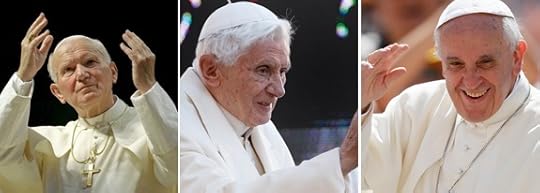
Holy Fathers, Holy Faces | James Day | CWR
Finding the face of God in the witness of recent popes and of an earthly father
Another Lenten season has begun for the Church, the time in which the most important truths of the faith are meditated upon, re-enacted, and celebrated. It will be almost 20 years next October since John Paul II lauded the “new springtime of the human spirit” that seems to be blooming in the pontificate of Pope Francis, himself elected during Lent last year.
How could we forget Lent 2013, when Benedict XVI ignited a Franciscan revolution with his resignation? Unfortunately, that decision is seen by some as a sign of weakness, of a papal nadir, even, in some quarters, the mark of a “disastrous papacy.” Yet without Benedict there would be no Francis.
Without Benedict, I wouldn’t be writing this today, nor would I, perhaps, consider myself a penitent son of the Church in need of redemption but cognizant of God’s immense, undeserved love. As Benedict said in Christianity and the Crisis of Cultures, a lecture delivered the day before John Paul II died in 2005, “When faced with the question of God, man cannot permit himself to stay neutral. All he can say is ‘Yes’ or ‘No’—without ever avoiding all the consequences that derive from this choice even in the smallest details of life.”
This is about the battle of that question of God, with a “Yes” influenced by some great teachers I’ll call Holy Fathers.
The death of John Paul II
In the fall of 2004, fresh from an undergraduate career at John Carroll University in Cleveland, I ventured west for graduate school at Loyola Marymount University in Los Angeles. I was intrigued by a Jesuit university in the City of Angels and confident that studying for a Master of Fine Arts in a Catholic environment would be the best of both worlds. I planned on landing at LAX with two suitcases and a wealth of hope.
Luckily, my dad knew better.
Beautiful book helps prepare children for the Sacrament of Confession
SAN FRANCISCO, March 6, 2014 – Several years ago, Ignatius Press and Magnificat joined forces to launch a new line of beautifully illustrated, high quality, Catholic children’s books. These charming books have captured the imagination of children of various ages through delightful full-color illustrations, exciting stories from the Bible and lives of the saints, and simple yet powerful prayers.
Recently a new book that helps prepare children for the Sacrament of Confession has been added to the series: A Little Book About Confession for Children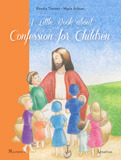 by popular blogger Kendra Tierney of Catholic All Year.
by popular blogger Kendra Tierney of Catholic All Year.
The Sacrament of Confession is often misunderstood by children and adults alike. While your child is preparing for his or her first Confession, it’s easy for you both to feel overwhelmed. Even if the first Confession was a while ago, perhaps you wish that you and your child had a better understanding of the sacrament.
A Little Book About Confession for Children explains the hows and whys of going to Confession. It includes step-by-step instructions for preparing and receiving this beautiful sacrament of healing, which draws us into the infinite mercy of God. The book even provides an examination of conscience just for kids.
Everything you and your child need to know about the Sacrament of Confession can be found in this informative little book with charming four-color illustrations. A Little Book About Confession for Children is perfect for preparing to receive the Sacrament of Reconciliation for the first time and is sure to be used over and over again.
Author Kendra Tierney explains why decided to write a book on this important topic, “The questions and answers in my book are a result of my own experiences as I helped my son to prepare for his first confession. In my quest to answer all of his questions, I ended up filling in a lot of gaps in my own knowledge of Church teaching, and now we both have a much better understanding of this beautiful sacrament. I hope what we learned can help you too!”
About the Author:
Kendra Tierney is a Catholic wife and mother of seven who spends the after-bedtime hours writing a blog, www.catholicallyear.com, about homemaking, homeschooling, and Catholic life. A Little Book About Confession for Children is her first book.
To request a review copy or an interview with author Kendra Tierney, please contact:
Rose Trabbic, Publicist, Ignatius Press, (239)867-4180 or rose@ignatius.com
Sample pages:
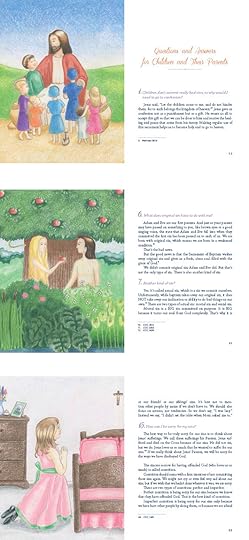
Carl E. Olson's Blog
- Carl E. Olson's profile
- 20 followers


